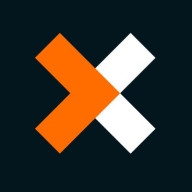

Nintex Process Platform and Tidal by Redwood both compete in the workflow and automation solutions category, offering distinct advantages. Nintex is favored for its pricing and support, though Tidal excels in features and user satisfaction.
Features: Nintex Process Platform offers scalability and ease of workflow creation with a low-code environment. Its SmartObject technology streamlines data management across systems, and SmartForm accelerates web form development. Integration with Microsoft ecosystems is highlighted. Tidal by Redwood provides superior workload automation, cross-platform scheduling, and advanced dependency management, offering users control over job processes with impressive flexibility and performance.
Room for Improvement: Nintex could enhance its management console, expand reporting capabilities, and improve integration and error reporting. Users seek better forms functionality and a flexible licensing model. Tidal by Redwood needs improvements in user interface, training, documentation support, and more intuitive reporting capabilities, with better integration with popular cloud and DevOps tools.
Ease of Deployment and Customer Service: Both products offer deployment options, including on-premises and cloud. Nintex provides a hybrid model with responsive customer service, though its technical support isn't always satisfactory. Tidal by Redwood receives positive feedback for support, with needed improvements in easing the learning curve for newcomers.
Pricing and ROI: The Nintex Process Platform is considered expensive but valuable, offering a consumption-based model deemed justified by its features and ROI through time savings and productivity. Tidal by Redwood is seen as budget-friendly with competitive licensing and a strong return on investment. Its flexible licensing model, allowing unlimited agent additions, is appreciated, providing notable ROI through automation and efficiency gains.


Nintex Process Platform automates processes such as approvals, vendor requests, and leave management, optimizing workflows in sectors like government, banking, and HR.
Nintex Process Platform streamlines collaboration and integrates seamlessly with Microsoft tools. It supports account management, loan origination, claims reimbursement, and public e-services, while also assisting with onboarding, resource management, and compliance workflows. Users benefit from its ease of maintenance, low-code development, and powerful workflow engine capable of handling complex processes through SmartObjects technology.
What are some key features?Nintex Process Platform is implemented across various sectors, such as government, banking, and HR, providing significant improvements in workflow efficiency. In governmental agencies, it facilitates public e-services and compliance workflows, while in banking, it supports account management and loan origination. HR departments benefit from enhanced onboarding, resource management, and leave management processes.
Tidal Software is a leading provider of enterprise workload automation solutions that orchestrate the execution of complex workflows across systems, applications and IT environments. With a comprehensive portfolio of products and services, Tidal optimizes mission-critical business processes, increases IT cost efficiencies and satisfies legal and regulatory compliance requirements. Hundreds of customers around the world count on Tidal for modernizing their workload automation and driving their digital transformation. Tidal Software is headquartered in Chicago with offices in Houston, London, Minsk, Belarus and Chennai, India. For more information, visit tidalsoftware.com.
We monitor all Workload Automation reviews to prevent fraudulent reviews and keep review quality high. We do not post reviews by company employees or direct competitors. We validate each review for authenticity via cross-reference with LinkedIn, and personal follow-up with the reviewer when necessary.